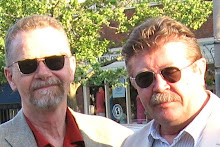THEATRE REVIEW: THE WOMEN
31 May'10
JOHN COULBOURN - QMI Agency
Rating: 3.5 out of 5
NIAGARA-ON-THE-LAKE — It's as big and broad as the shoulders on one of Joan Crawford's business suits — and frankly, just about as dated. And small wonder.
In a world where television has offered us an all but non-stop diet of shows such as Dynasty, Desperate Housewives, The Real Housewives of New Jersey and, of course, Sex and The City, Clare Booth Luce's 1936 stage catfight, THE WOMEN, seems to have lost a whole lot of its celebrated hiss and vinegar.
That hasn't stopped Jackie Maxwell, artistic director of the Shaw Festival, from programming it as part of her summer's season. As a result, THE WOMEN took to the stage of the Festival Theatre on Saturday night to close out an opening week that, while it can boast no major hits, has managed to avoid any strikeouts as well.
And happily, this production of THE WOMEN continues that streak, with director Alisa Palmer marshaling a cast of 20 largely accomplished actresses to tell the story of love, betrayal and revenge in mid-20th century Manhattan. They are led by Jenny Young, cast as the contented upscale housewife, Mary Haines, and by Moya O'Connell, cast as the conniving Crystal Allen, the ambitious young sales clerk who poaches Mary's husband and almost destroys her marriage.
It's a familiar tale, of course. But what made Luce's stage play such a sensation more than eight decades ago was that she never allowed her audience to meet the husband her two protagonists were battling over — nor any other man, for that matter. Instead, she set her story in places where women of this social strata gather, or gathered, back in the day: at afternoon card parties, fitting rooms, kitchens, beauty parlours, powder rooms, bedrooms, even the dude ranches of Nevada where these women went to put a quick end to marriages that had passed their best-before dates.
Even in the rarified social circles in which THE WOMEN is set — or perhaps, particularly in those circles — a fascinating cast of supporting players is featured. These are places where we meet women such as Kelli Fox's Nancy Blake, an acid-tongued spinster who pours her passions into writing; Wendy Thatcher's Countess de Lage, a much married woman of a certain age and certain wealth; and Deborah Hay's Sylvia Fowler, a woman who, while she seemingly avoids kitchens like the plague, simply cannot resist stirring all the pots nonetheless.
There's even a familial element to it all, with Sharry Flett stepping in to play the role of Mary's mother, and a young Celeste Brillon essays the role of her precocious daughter, while Jenny L. Wright's Edith Potter takes the role of the traditional madonna and sets it on its ear.
Designer William Schmuck makes the most of these rarified settings and creates glittering set pieces that glide on and off the stage like a fleet of opulent town cars, earning points for his take on the famous bath-tub scene, and several others. And while Palmer quite wisely recognizes that there will be a certain pleasure for her audience in watching Schmuck move from excess to excess, she too often allows his style to overcome Luce's substance, pacing the action to serve Schmuck's vision and not the demands of the story, too often allowing his costumes to wear her actresses instead of the other way around.
In a production that clocks in at close to the three-hour mark, she also allows a certain langour to infect her staging, leaving one longing on several occasions for the brevity of George Cukor's celebrated movie of the tale. Still, when it comes to a staid alternative to Sex And The City 2, it's right up there. Whether or not that's a good thing is, of course, up to you.
Monday, May 31, 2010
Subscribe to:
Post Comments (Atom)




No comments:
Post a Comment